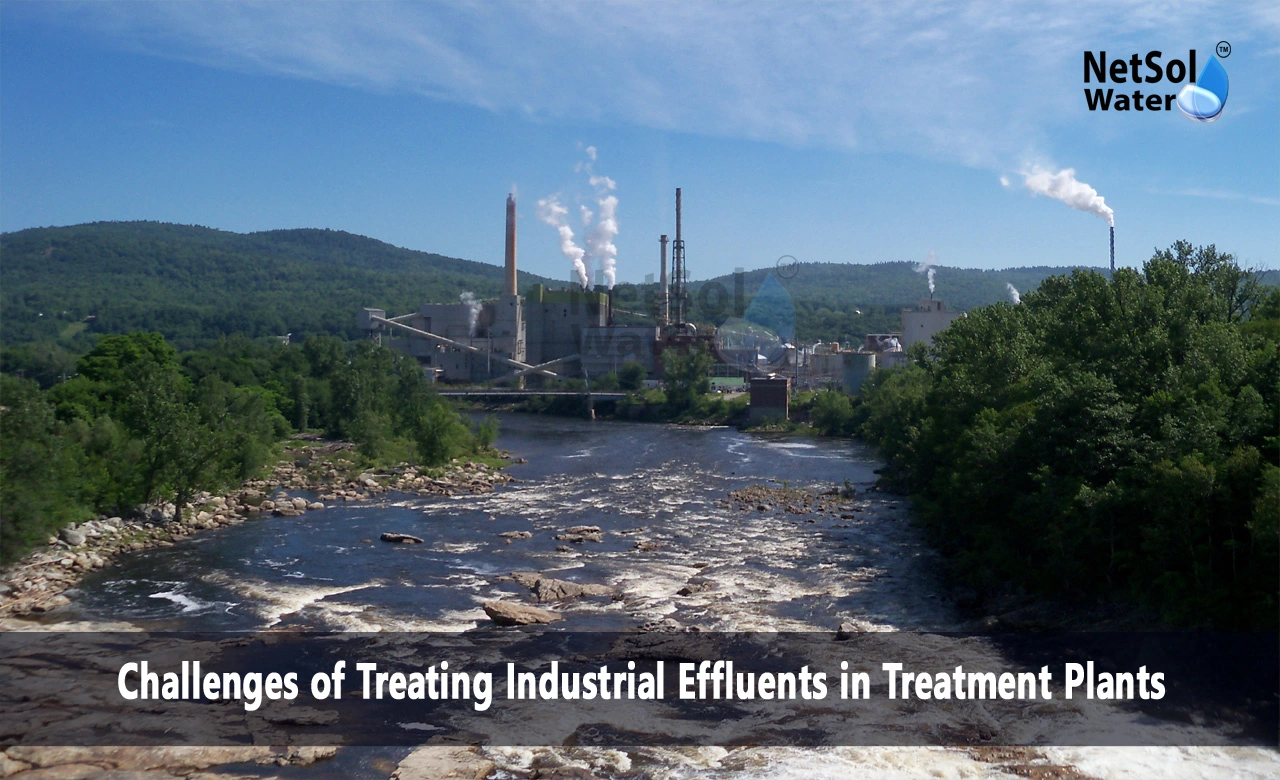In today's industrialized world, the generation of effluents (liquid waste) from various manufacturing processes is an unavoidable reality. These effluents often contain a wide range of pollutants, including organic matter, heavy metals, and other toxic substances. If left untreated, these pollutants can cause severe damage to the environment and human health. To mitigate this risk, industrial effluents must undergo treatment before being discharged into water bodies or municipal sewage systems.
Industrial effluent treatment plants play a crucial role in removing these pollutants from the wastewater. However, treating industrial effluents is a complex process that presents several challenges. In this blog, we will explore some of the most significant challenges faced by industrial effluent treatment plants.
Challenges of Treating Industrial Effluents in Treatment Plants
Variability in Effluent Composition
A major obstacle in treating industrial liquid waste is the diverse nature of its composition. Effluents from different industries contain varying pollutants, making it challenging to develop a universal treatment approach. For instance, textile effluents may contain dyes and pigments, while chemical industry effluents may have solvents and acids.
This diversity necessitates employing multiple treatment methodologies and technologies to effectively eliminate the specific contaminants present in each type of effluent. Treatment facilities must incorporate a combination of physical, chemical, and biological processes to address the wide range of pollutants.
Presence of Recalcitrant Pollutants
Certain industrial effluents contain stubborn pollutants, resistant to conventional treatment methods. These pollutants are often complex organic compounds or heavy metals, difficult to break down or remove using traditional processes.
Polychlorinated biphenyls (PCBs), dioxins, and some persistent organic pollutants (POPs) exemplify such recalcitrant pollutants. Treating effluents with these contaminants demands advanced treatment technologies like advanced oxidation processes (AOPs) or membrane filtration systems, which can be costly and energy-intensive.
High Pollutant Concentrations
Industrial liquid waste often contains pollutants at significantly higher levels compared to municipal sewage. Such elevated concentrations can overload conventional treatment methods, resulting in incomplete pollutant removal or formation of toxic byproducts.
Addressing effluents with high pollutant loads may necessitateadditional pretreatment measures like dilution or equalization to enable effective pollutant removal through treatment processes. These extra steps can escalate the overall treatment costs and complexity.
Disposal of Concentrated Waste Streams
The treatment process generates various waste byproducts like sludge, spent adsorbents, and concentrated brine solutions. These waste streams often contain high pollutant levels and require proper disposal or further treatment to prevent environmental contamination.
Disposing of these concentrated waste streams poses a significant challenge for industrial wastewater treatment facilities. Improper disposal can contaminate soil, groundwater, and air. Treatment plants must implement suitable systems for safe handling, storage, and disposal of these waste streams, which can increase overall operational costs.
Energy and Resource Consumption
Industrial effluent treatment processes can be energy-intensive and resource-intensive. Many treatment technologies, such as membrane filtration, advanced oxidation processes, and thermal treatment, require significant amounts of energy to operate effectively.
Additionally, some treatment processes may require the use of chemicals, such as coagulants, flocculants, and adsorbents, which can be costly and may need to be replaced regularly. The high energy and resource consumption can increase the overall operating costs of the treatment plant and contribute to its environmental footprint.
Regulatory Compliance
Industrial wastewater treatment facilities must adhere to various environmental regulations and discharge standards set by local, state, and federal authorities. These regulations typically outline the maximum permissible levels of pollutants that can be released into water bodies or municipal sewage systems.
Staying up-to-date with constantly evolving regulations and meeting increasingly stringent discharge standards poses a significant challenge for treatment plants. Non-compliance can lead to substantial fines, legal actions, and negative public perception, which can impact the industry's reputation and financial performance.
Maintenance and Operational Challenges
Industrial effluent treatment plants are complex systems that require regular maintenance and skilled personnel to operate effectively. Equipment such as pumps, pipes, and treatment units must be regularly inspected, cleaned, and repaired to prevent breakdowns and ensure optimal performance.
Maintaining proper maintenance and operational practices can be challenging, especially in industries with high staff turnover or limited resources for training and development. Inadequate maintenance or improper operation can result in inefficient treatment, equipment failure, and potential environmental violations.
Cost Considerations
Setting up and running an industrial wastewater treatment plant requires substantial financial investment. The costs involved in the treatment process include capital expenditure for equipment and infrastructure, as well as ongoing operational expenses for energy, chemicals, labor, and maintenance.
For smaller industries or those with constrained financial resources, justifying the investment in advanced treatment technologies or maintaining the required operational standards can be challenging. Striking a balance between treatment effectiveness and cost-efficiency remains a constant hurdle for industrial effluent treatment facilities.
Conclusion
Addressing the hurdles in treating industrial liquid waste is a complex task involving multiple considerations. Treatment facilities face obstacles like varying pollutant compositions, stubborn contaminants, high concentration levels, disposal of concentrated byproducts, energy and resource demands, adhering to evolving regulations, maintenance requirements, and cost implications – all while striving to safeguard the environment and public health.
Overcoming these obstacles necessitates a synergistic approach combining technological innovations, effective management strategies, and collaborative efforts among industries, regulatory authorities, and research organizations. By fostering innovation, responsible resource utilization, and continuous improvement, industrial wastewater treatment plants can play a pivotal role in promoting sustainable industrial practices and preserving natural resources.
Do you need an advice or assistance on selecting the best water and waste water treatment unit? We have solutions for all your problems!
Let us know your problem, our experts will make sure that it goes away.
For an assistance or related query,
Call on +91-965-060-8473 Or write us at enquiry@netsolwater.com



